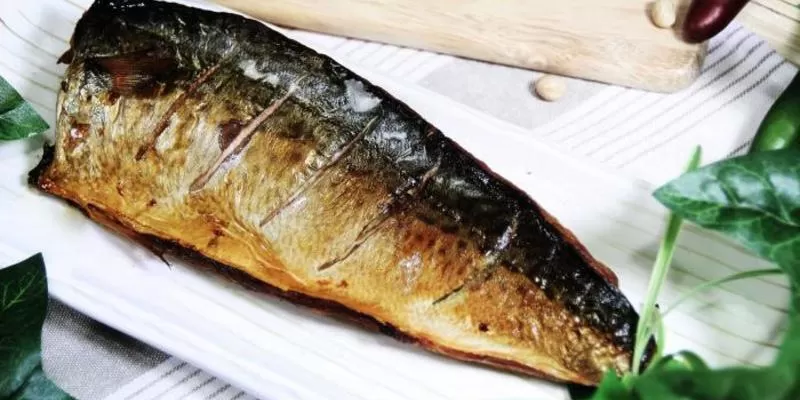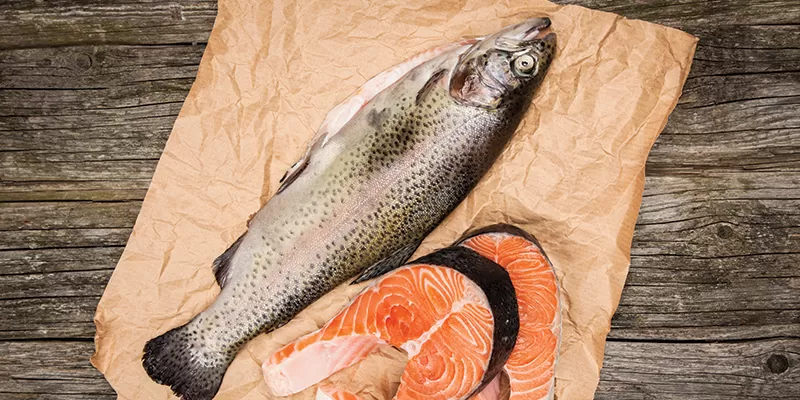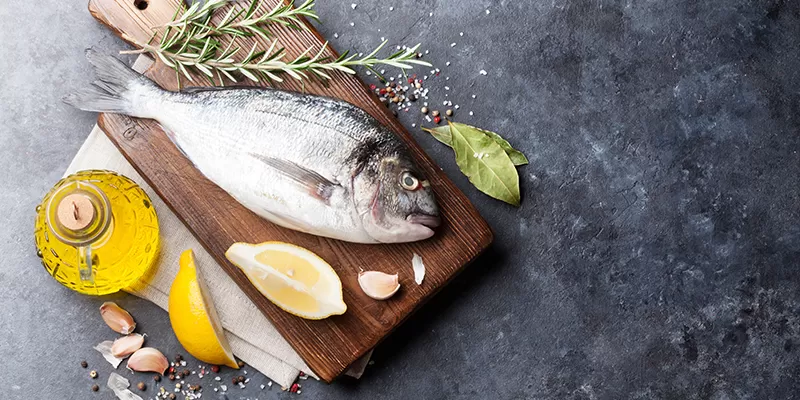Smoked fish is one of the most popular delicacies. Luxurious, rich and full-bodied taste and delicate texture make it perfect for both festive feasts and everyday meals. In addition, it has a rich, characteristic aroma, which further enhances its nutritional qualities.
However, there are two ways to cook this dish — hot and cold. And the same fish — for example, mackerel — can be presented in several “options”. And it is not clear what is better to serve on the table.
In this material, we will figure out how hot and cold smoked fish differ — and which is better to choose.
Hot smoked fish

Hot smoking products, as the name implies, involves heat treatment. So, for example, fish is heated to 80–125 degrees, depending on the variety. This cooking method is very fast.
In particular, hot smoking of fish takes only 1.5–2 hours. In this case, it is not necessary to prepare the product. It is desirable, of course, to remove the gills and offal — but not necessarily. The fish can go to the smokehouse immediately after being caught.
Thanks to hot smoking, several important advantages of the finished dish are achieved at once:
-
Characteristic brown color. It is given by volatile resins deposited on the surface of heated pulp or skin. However, their number is insignificant and you can ignore their content in the composition of the finished dish;
-
Soft, delicate, crumbly texture. With high-temperature processing, the fish, while in the smokehouse, is literally boiled in its own juice. That is why its meat easily lags behind the bones or skin, and also acquires a very delicate and soft texture. Such a dish is good for eating directly in pieces, but bad for use in salads, soups, pies or other products;
-
Various bacteria and parasites are destroyed. Especially a lot of them in river or other freshwater fish. Therefore, any silver carps or carps are not suitable for consumption in an unheated form.
After smoking, fish carcasses or fillets can be served immediately. Additional drying or drying is not required.
The taste of hot smoked fish is rich, “smoky”. For many people, it is especially attractive. At the same time, if you overexpose the fish in the smokehouse, it will become tart and bitter, saturated with resins, and practically unsuitable for consumption.
At the same time, hot smoking slightly worsens the nutritional quality of the product. During heat treatment, the vitamins contained in its meat, including the especially important vitamin D, are destroyed. Fat is also rendered from the meat — a source of beneficial acids and trace elements. Therefore, some hot-smoked mackerel is a delicious delicacy, but of little use.
In general, hot smoked fish is characterized as follows:
-
Soft, delicate texture. The meat easily moves away from the bones and skin, and also literally melts in the mouth;
-
Bright taste with prevailing “smoky” shades. Intense smoky aroma;
-
The characteristic golden or brown color of the meat, due to the large amount of volatile resins. However, their content is trace and safe for the body;
-
A small amount of vitamins and fatty acids, which is due to heat treatment;
-
Heat treatment also allows you to get rid of bacteria and parasites.
It is worth considering that some types of fish, especially those suffering from parasites — and these include almost all river and freshwater species, as well as some marine (like herring) — must undergo heat treatment. That is, the only smoking option for them is hot.
So, let’s sum up.
Advantages
-
Easy to cut and serve due to its soft, delicate texture, as well as the fact that its meat is easily separated from the bones and skin;
-
During heat treatment, bacteria, parasites and their eggs are destroyed. So this product is completely safe to use.
Flaws
-
There are practically no useful substances left in the pulp. During heat treatment, vitamins are destroyed, and fat is rendered;
-
The pulp contains more volatile resins from the smoke. They are prohibited for some people with intolerance or functional digestive disorders;
-
Taste — more intense flavor and “smoky” aroma — is subjective. So they can be liked by some people and disliked by others.
Cold smoked fish

Cold smoking does not imply heat treatment. Instead, the fish are exposed to the smoke for an extended period — at least several days — at a room temperature of about 30 degrees. This process is similar to classic drying, but gives a different, richer and more characteristic taste.
Before cold smoking, the fish must be salted. This allows you to extend the shelf life. And the salt itself serves as a preservative and prevents the finished carcasses or fillets from spoiling. After smoking, additional processing is also required — drying or drying. The specific timing of the duration of these culinary processes depends on the variety.
Thus, cold-smoked fish cooks for a very long time. At best — only 2–2.5 weeks, at worst — more than a month. But the time spent is well worth it. Cold-smoked fish is not only tasty — it can also be stored for a very long time, up to several months, subject to temperature and humidity conditions.
When salted and dried, the texture of the fish changes. It becomes more dense and elastic. The pulp does not separate well from the skin and bones, so cold smoking is poorly suited for small varieties of fish like capelin — it will be at least difficult to “disassemble” the dish during use.
But with low-temperature drying in a smokehouse, you can make excellent balyki. The firm, resilient flesh makes them suitable for sandwiches, holiday cuts, or simply tossed into other dishes like salads or pies. And they keep for a very long time.
Also, the absence of exposure to high temperatures during smoking allows you to save useful substances in the dish. Fat is not rendered, vitamins are not destroyed. Such a fish is especially useful in the cold season, when the body is experiencing an acute shortage of various nutrients.
At the same time, salting and drying do not help get rid of parasite eggs. As a result, cold-smoked river fish cannot be consumed without heat treatment! This also applies to silver carp balyks.
The taste of fish cooked in this way is quite peculiar. “Smoky notes”, of course, are preserved, but they do not dominate the main “bouquet”. Rather, the smoked taste complements the natural aroma. In some species, such as trout, pink salmon or sea bass, it is practically not felt at all.
In general, cold smoked fish is characterized as follows:
-
Elastic, dense texture. The pulp is difficult to separate from the bones or skin, but it is easily cut into neat thin strips or straws;
-
Characteristic taste, which is complemented by “smoky notes”. Smoked flavors are present, but do not prevail. Cold smoking is ideal for fatty breeds that do not boast a strong taste of their own — like salmon or sea bass;
-
Light color. With low-temperature drying in smoke, the fish acquires an unsaturated golden or brown hue. The amount of resins in comparison with the hot version also slightly decreases, especially in the thickness of the pulp;
-
Fatty acids are preserved because fish oil is not rendered. But vitamins can be destroyed — although in the thickness of the pulp, where neither smoke nor air enters, they “remain intact”;
-
Cold smoking does not involve heating to disinfecting temperatures, so it is not suitable for river or other freshwater species. They may harbor bacteria or, more dangerously, parasite eggs.
Cold smoking is great for oily fish. Salmon breeds, ocean perches, mackerel and similar varieties are best “revealed”. The absence of heat treatment and a dense texture allows you to save, and does not allow fat to melt. But it is recommended to smoke already cleaned fillets in this way, since after all the procedures the meat will “stick” to the bones and skin.
So, let’s sum up.
Advantages
-
Preserves vitamins and fish oil, making the product more useful;
-
Increases the shelf life of the finished dish — up to several months, subject to temperature and humidity;
-
Very little effect on taste and aroma, allowing you to keep them natural;
-
The finished dish contains less volatile resins that are dangerous for people with sensitive digestion or its functional disorders.
Flaws
-
Cooking takes a lot of time. That is why fish prepared in this way can be distinguished by an increased price;
-
The absence of heat treatment does not kill parasites, their eggs and harmful bacteria;
-
The elastic texture of the finished product may please someone, but not so much. Therefore, this is a very subjective criterion.
Comparison

So, cold-smoked fish is healthier, and hot-smoked fish is safer. But the differences between the two cooking methods are not limited to this.
|
|
|
|
|
|
From several weeks (taking into account salting, smoking and drying)
|
1.5–2 hours
|
|
Is it heat treated?
|
Not
|
Yes
|
|
|
Yes
|
Relatively (during heat treatment, fat is melted)
|
|
Is it suitable for freshwater varieties?
|
No (such breeds must undergo heat treatment)
|
Yes
|
|
|
Relatively low
|
Relatively high
|
|
Are fish oils and vitamins preserved?
|
Yes
|
Not
|
Hot-smoked fish is a safe delicacy for smoky lovers and freshwater cookers. Cold smoked fish is more suitable for lovers of ocean species.

Добавить комментарий
Для отправки комментария вам необходимо авторизоваться.